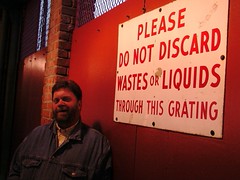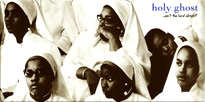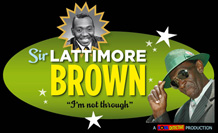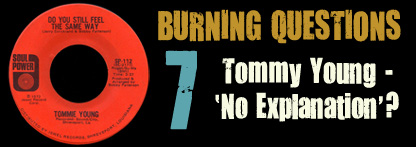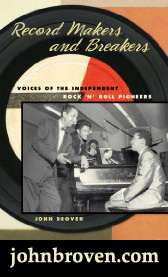 Nearer To You
Nearer To You
James Luther Dickinson
1941-2009
"The river flows on like a breath
In between our life and death..."
Yes, Memphis music legend (and one of the absolute coolest guys on the planet)
Jim Dickinson crossed that borderline this past weekend.

One of the central protagonists in Robert Gordon's superb
It Came From Memphis, Dickinson represented so much. Coming up out of the folk scene and the neo-biblical Overton Park Blues Festivals in the early sixties, he went on to carve out his own unique place in the rich history of Bluff City music. After being 'discovered' by
Bill Justis, Jim went on to record with
Sam Phillips at Sun, then got his first real job as a studio musician at American Sound with
Chips Moman. He had found his calling.
"A lot of people will talk bad about Chips but I never will. He Gave me my break...", he told
Swampland.

Dickinson cut his teeth with
John Fry at
Ardent, helping him move the studio out of his parents' garage in 1966, and working with him on creating 'that sound'. Along with fellow alchemist
Terry Manning, Dickinson dove head first into the concept of sound engineering, and kind of re-invented it from the ground up. By 1968,
Al Bell was 'sweetening' Stax product over there, and became one of Ardent's best customers.
"I considered Fry, Dickinson, and Manning to be unique creative geniuses. I had tremendous respect for them, and I felt the same way about them that I did about Steve Cropper and Jim Stewart," he told
Andria Lisle.

When
Shelby Singleton created a subsidiary label for
Lelan Rogers (aka
The Silver Fox) as a part of his SSS International empire in 1968, he let him run it his own way. Rogers had been around the block a couple of times, and when he signed the young
Betty Lavette in 1969, he took her to Memphis to record. Dickinson was by then a part of the rhythm section at
Stan Kesler's
Sounds of Memphis studio, cutting whatever came through the door. That's Jim playing piano on this incredible version of the tune that
Betty Harris had taken into the top twenty for
Allen Toussaint a couple of years before (the flip, the red hot
He Made A Woman Out Of Me, would make it to #25). After moonlighting at Muscle Shoals (and working with the Stones on
Wild Horses in the process),
Jerry Wexler talked Dickinson and the rest of the Sounds of Memphis crew into becoming the house band down at 'Atlantic South', Criteria Studios in Miami.
"Lelan Rogers told us literally the night before we went to Miami, he said, ‘Boys I’m sorry, but I think you already played your best music’. And he was right," Dickinson said.

Be that as it may,
The Dixie Flyers, as they now called themselves, made some truly astonishing music. Wexler had big plans for them (as evidenced by the fact that he gave them label credit alongside Aretha on the singles lifted from her
Spirit In The Dark Lp). They would cut something like 14 albums in six months (including Dickinson's own cult classic
Dixie Fried), before it all went to hell.
"It never crossed my mind that I would get away from Memphis and go crazy, but I certainly did," he said,
"...It was not easy, but for me it was like a Master’s Degree. It was beyond a normal education in record making... six months with Tom Dowd, believe me, was a crash course."
Dickinson took that wisdom back to Memphis and became one of the great producers of our time. His work with
Alex Chilton on Big Star's
Third at Ardent was so ahead of its time that it wasn't even released until four years after it was recorded. It is still influencing people to this day. He lent his unique vision to albums by Ry Cooder, Bob Dylan, Toots & the Maytals, The Radiators, Los Lobos, The Replacements, and many, many
more. Whether with his own 'supergroup'
Mud Boy and the Neutrons or, in more recent years, with his sons'
North Mississippi All Stars out at the fabled
Zebra Ranch, Jim Dickinson remained true to his
Production Manifesto:
 "The unretainable nature of the present creates in Man a desire to capture the moment. Our fears of extinction compel us to record - to re-create - the ritual ceremony. From the first hand-print cave painting to the most modern computer art, it is the human condition to seek immortality. Life is fleeting. Art is long. A record is a 'totem', a document of a unique, unrepeatable event worthy of preservation and able to sustain historic life. The essence of the event is its soul. Record production is a subtle, covert activity. The producer is an invisible man. His role remains a mystery. During the recording process there is an energy field present in the studio - to manipulate and to maximize that presence - to focus on the peculiar 'harmony of the moment' is the job of the producer. Music has a spirit beyond the notes and rhythm. To foster that spirit and to cause it to flourish - to capture it at its peak is the producer's task."
"The unretainable nature of the present creates in Man a desire to capture the moment. Our fears of extinction compel us to record - to re-create - the ritual ceremony. From the first hand-print cave painting to the most modern computer art, it is the human condition to seek immortality. Life is fleeting. Art is long. A record is a 'totem', a document of a unique, unrepeatable event worthy of preservation and able to sustain historic life. The essence of the event is its soul. Record production is a subtle, covert activity. The producer is an invisible man. His role remains a mystery. During the recording process there is an energy field present in the studio - to manipulate and to maximize that presence - to focus on the peculiar 'harmony of the moment' is the job of the producer. Music has a spirit beyond the notes and rhythm. To foster that spirit and to cause it to flourish - to capture it at its peak is the producer's task."You have caused it to flourish, my brother, may you rest in peace.

 Our friend Willie Mitchell isn't doing so hot. In what he described to me as a 'string of bad luck', he's been dealing with some major issues this summer. His house 'burned up', he said, and he's been unable to live there. After a nasty fall in which he broke his hip, he's been confined to a wheelchair. He didn't even know the hip was broken, he said, for a couple of months. Willie's also been struggling with complications from the ankle he broke last year, which hasn't healed properly because of his diabetes. He entered the hospital in Memphis yesterday for an operation on his hip that will, hopefully, help with the pain. Willie Mitchell has been, through it all, his usual stoic self, answering the phone at Royal just as he has for the past forty years. He is 81 years old. I told him we'd be praying for him.
Our friend Willie Mitchell isn't doing so hot. In what he described to me as a 'string of bad luck', he's been dealing with some major issues this summer. His house 'burned up', he said, and he's been unable to live there. After a nasty fall in which he broke his hip, he's been confined to a wheelchair. He didn't even know the hip was broken, he said, for a couple of months. Willie's also been struggling with complications from the ankle he broke last year, which hasn't healed properly because of his diabetes. He entered the hospital in Memphis yesterday for an operation on his hip that will, hopefully, help with the pain. Willie Mitchell has been, through it all, his usual stoic self, answering the phone at Royal just as he has for the past forty years. He is 81 years old. I told him we'd be praying for him. Ironically, Fat Possum just released Ooh Baby You Turn Me On, Willie's 1967 album that contained top ten R&B hit Soul Serenade, and earned him and the band the Cashbox award for Best Instrumental Group the following year. This rollicking B side we have here (the flip of Willie's top 40 cover of Jimmy Smith's Prayer Meetin') is from Willie Mitchell Live, the follow-up Lp they recorded with that 'live in the studio' feel to it. I'm not sure what the title is all about, but that's OK... it cooks.
Ironically, Fat Possum just released Ooh Baby You Turn Me On, Willie's 1967 album that contained top ten R&B hit Soul Serenade, and earned him and the band the Cashbox award for Best Instrumental Group the following year. This rollicking B side we have here (the flip of Willie's top 40 cover of Jimmy Smith's Prayer Meetin') is from Willie Mitchell Live, the follow-up Lp they recorded with that 'live in the studio' feel to it. I'm not sure what the title is all about, but that's OK... it cooks.








